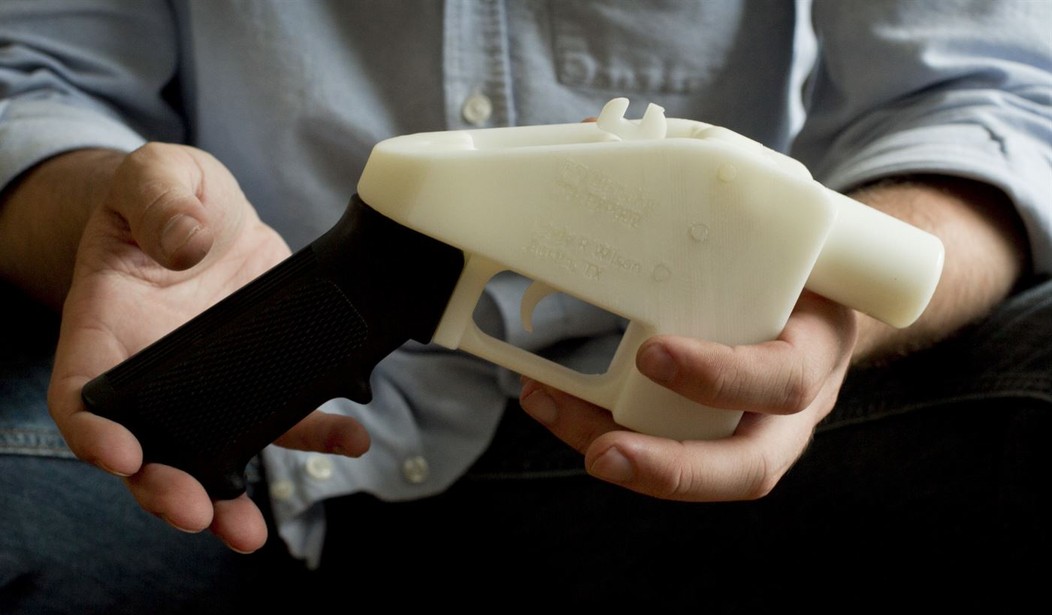
‘From the moment the anti-gun crusaders learned that the Trump Administration was dropping it’s ITAR case against Defense Distributed, they’ve gone absolutely nuts. They’ve argued that every criminal imaginable will start building guns with 3D printed parts, that we’ll have a legion of guns undetectable by metal detectors, and we’re all going to die in a blaze of 3D printed gunfire.
The question the media reporting on this tends to miss, something gun fans already know, and that’s the limits of plastic parts.
Luckily, at least someone in the media decided to ask the question. I’m surprised it was USA Today, though.
Some 3D print experts said that even if Wilson wins his battle, the plastic gun is, at least at this point, not a practical weapon.
“It’s not feasible to print a 100% 3D-printed gun, because the plastic that is being printed that is used here is not strong enough to withstand a barrel or the explosion from a bullet,” said Michael Flynn, who runs a year-old 3D printing business in Fort Worth, Texas.
As the latest chapter in America’s battle over gun control unfolds, the use of 3D printing technology for manufacturing reliable firearms is still very much a work-in-progress and a pricey endeavor.
Industrial 3D printers cost $20,000 to $100,000, and many companies that rent use of their printers explicitly prohibit users from manufacturing weapons.
…
Gun control advocates and some policymakers – including attorney generals from eight states and the District of Columbia who sued the government to block the blueprints – said homemade plastic weapons without serial numbers could aid terrorists and endanger the public. Critics are concerned that the availability of 3D guns would give felons and others restricted by law from possessing weapons another route to illegally secure firearms.
Federal law requires all firearms to have at least 3.7 ounces of steel, so they can be detected by metal detectors. Gun rights advocates noted that one easy workaround for gunmakers would be to add a single removable metal component.
Linda Teplin, a Northwestern University psychiatry professor who studies the correlation of firearms violence, public health policy and criminalization of the mentally ill, said 3D-gun blueprints could lower the bar for accessibility to weapons. She predicted “perpetrators of mayhem” would take advantage.
“No restrictions, background checks or serial number?” Teplin said. “Now, guns are available to anyone – even a child – who can use a computer and has a 3D printer. We cannot reduce the epidemic of firearm violence if we increase the availability of guns.”
…
David Prince of Eagle Gun Range in Farmer’s Branch, Texas, said a 3D printer might make the process of building a gun simpler, but he doubts people will rush out and buy the equipment to do it themselves.
“You still can’t get through metal detectors,” he said. “You still have to have ammo to fire it. That metal that’s in the ammo is going to be detected.”
Flynn, who owns the Fort Worth 3D printing company, said it was more conceivable to use a 3D printer for accessories, such as magazines and gun stocks, rather than an entire weapon.
I hate to break it to the good professor up there, but the bad guys haven’t exactly been having trouble getting their hands on guns for quite some time. They’re buying guns off the black market and stealing them from lawful gun owners. Despite the rhetoric, there’s not much evidence of them building their own, despite the ability to do so being common.
The truth of the matter is that there’s absolutely no truth to their scare tactics.
3D printed guns have been a thing pretty much since 3D printing first popped up, but they’re not going to be the risk people think unless materials science takes a massive leap forward. The plastic used in printing isn’t remotely strong enough to serve as a firing pin, much less as a durable barrel. The all plastic guns of today aren’t really a threat.
Not that it’ll change the impression in the minds of the anti-gunners. Reality rarely does.








Join the conversation as a VIP Member